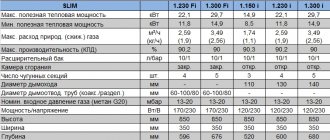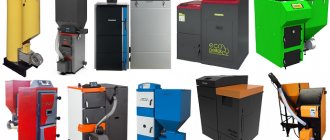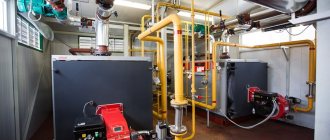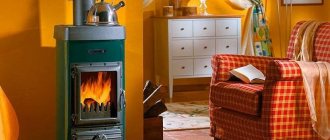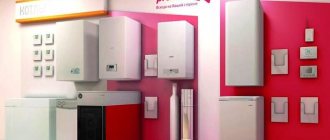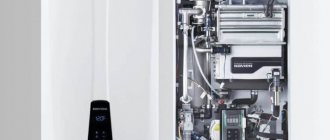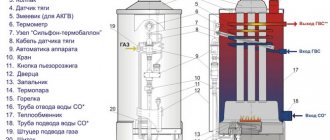Any industrial enterprise, regardless of its profile and size, needs heat to heat its production areas. Moreover, many technological processes depend on the availability of thermal energy, for the generation of which industrial gas boilers are traditionally used. Thermal energy is supplied to production in two forms: hot water or steam.
Conditions: centralized main gas
Industrial equipment operates on centralized main gas, which is supplied from central direct gas supply systems in the city or locality. Such installations are most often used in the premises of the following facilities:
- warehouses;
- workshops;
- utility central heating points;
- administrative buildings, offices, buildings;
- indoor training grounds, playgrounds and other wide areas of premises.
Gas fuel is considered the most inexpensive than all others, which is why the equipment is more economical than solid fuel or other installations. The device has a special gas burner that directly supplies gas, and also has a special heat exchanger made of high-quality copper.
The design also includes a pump for supplying water (steam) , a pressure gauge for measuring pressure indicators, a thermometer showing the optimal heating temperature and, most importantly, a tank into which the coolant liquid – water – is supplied. To this it is worth adding a security system, which is now supplied to almost all models of modern industrial gas boilers.
Types of fuel used
The choice of fuel type is determined by its availability in a given area, cost, complexity of operation and maintenance of industrial equipment that converts it into heat. Ultimately, the budget, the price of the boiler installation and the payback period decide, and equipment manufacturers are ready to provide any solution to the problem.
Solid fuel
Until today, one of the main energy resources for generating electricity and heat in industry and utilities is solid fuel:
- coal of all types;
- tree and its derivatives;
- peat.
The cost of 1 kW of thermal energy produced by solid fuel equipment is on average 2 times higher than that of gas. However, the high level of automation of modern industrial boilers brings efficiency up to 92%, and in areas where solid fuel is available and almost free (for example, in large wood processing enterprises), after the equipment costs are recouped, heat costs will be minimal.
This is what a 1000 kW solid fuel industrial boiler looks like.
The use of solid fuel in industrial boilers to produce heat can make the process completely independent of electrical networks, but ash and smoke disturb the environment and do not allow the process to be fully automated. Waste has to be disposed of. The power of the equipment is greatly influenced by the humidity of the raw materials, which leads to the need to create reliable warehouses for temporary and seasonal storage, as well as organize its delivery to the boiler.
Perfect modern equipment operating on solid fuel makes it very popular for a long time, but in practice such boiler units are quite rare and extremely expensive. If an industrial solid fuel boiler is used, it is usually a relatively simple model from a local manufacturer.
Liquid fuel and gas
The cost of 1 kW of thermal energy when using natural gas from a pipeline as fuel is one of the lowest. A gas unit pollutes the atmosphere to a minimum with combustion products, so converting thermal power plants to gas instead of coal in many countries is an urgent task. Boilers using gas as the main fuel are the most advanced in automating the combustion process and achieve an efficiency of 95%. The heating rate of the coolant with gas is high, which allows you to quickly heat large industrial premises. The weak point is the threat of explosion, so safety issues in the production and maintenance of such equipment are one of the main tasks.
Requirements, materials used and boiler lining techniques that increase safety during operation
The use of diesel fuel for heat production is very expensive and is possible, most often, as a backup in systems where the heating cannot be turned off (in the North, in kindergartens and hospitals). Other petroleum products are also rarely used for heat production due to their danger to the ecosystem and high price. The exception is used motor oil, which is the cheapest type of liquid fuel. When using special burners in universal boilers, it is recycled and produces heat, but burns with a minimum of emissions only with extremely competent configuration of the equipment.
Manufacturers of industrial boiler equipment create universal boilers where, in addition to the main fuel, several types of liquid or biofuels can be burned using special options.
Types of boilers: hot water, steam pyrolysis
Depending on whether the device will heat a hangar or a small warehouse, two heating supply options are provided - steam or hot water. To heat indoor production areas, hot water boilers are most often used. And the steam pyrolysis option is well suited for residential buildings and small premises. Which of them is more economical and which is more expensive should be calculated individually, based on the parameters of the area, principle and design of each model separately.
Heating boiler Protherm Bizon NO 100
About heat exchangers
Pipes are needed for coolant inlet and outlet. The pipes may not form a complete circle; sometimes they are arranged in a semicircle and oriented above the burner. This design improves the aerodynamic characteristics inside the unit and promotes the efficient use of heat from combustion products escaping through the chimney. Heat exchangers of both described types are made of materials that have a high thermal conductivity coefficient.
Additionally: automatic boiler control, automatic fuel filling
The improvement of gas industrial boilers lies in the fact that they have automatic control, as well as automatic “filling” of fuel.
Automation consists of the following elements:
- Control block;
- elements that control the operation of the boiler - sensors, valves, control with a built-in microprocessor;
- elements safety system - warn of leaks, pressure drops, temperature increases, etc.
Thanks to this system, it is possible to control the supply of energy, shutdown, ignition of the flame, stability, and uniformity of pressure distribution in the system. And other. This also achieves significant savings in gas consumption.
Smoke exhaust systems
The boiler room smoke ventilation system is used to create a vacuum in the gas path of the boiler unit and remove flue gases from the boiler into the atmosphere. It consists of a smoke exhauster, a fan, chimneys and a chimney.
Instrumentation and safety automation (ICS) are designed to monitor the operation of the installation according to regime maps, regulate the boiler load and ensure safe operation of the equipment.
In all modern boiler units, the installation of instrumentation and control equipment is a mandatory requirement, in accordance with the norms and regulations for the operation of boiler installations.
Boiler equipment protection is triggered by activating sound and light alarms to alert operating personnel.
Instrumentation and automation protection parameters:
- separation of the torch in the boiler;
- high pressure of steam, gas, water;
- low vacuum in the boiler furnace;
- power outage;
- low water level in the boiler;
- low pressure of air, water and gas.
When the alarm is triggered, after a short time, if the operating personnel have not corrected the failure, the boiler is stopped by the instrumentation and control system, through forced shutdown of the gas supply to the furnace.
Advantages and disadvantages
The advantage of using industrial gas boilers in areas such as agriculture, production, administrative or residential buildings is easy installation and long-term operation without major repairs. But there are other advantages, which are as follows:
- The heat transfer coefficient is high , more than the consumption coefficient.
- The coolant in such boilers does not need to be brought to a boil, which eliminates the risk of compromising the integrity of the heating system itself.
- Work on different types of liquid energy without significant losses.
- Fluid movement is straight forward.
- Climate change regulators control the operation of the system.
- A control and measuring set of instruments is included in the boiler package.
- Perfectly mounted in a block-modular boiler system .
- There is protection against scale.
- Compact dimensions.
- Availability on the market.
- There is no need to connect to a power supply, which significantly reduces the cost of using the equipment.
The disadvantages of gas industrial installations are the following indicators:
- They consume fuel quickly and intensively.
- The price on the market is too high. You have to look for cheaper options from a direct supplier.
- Accidental extinguishing of the burner can lead to accidents and gas explosions. You need to choose a model with a built-in self-diagnosis and safety system - for example, thermostats that regulate the intensity of the flame.
What are industrial heating boilers?
Industrial buildings, be it a rolling mill, a flower greenhouse or a poultry farm, have specific characteristics that must be taken into account when developing a heating system:
- ceiling height and room volume;
- degree of insulation and the presence of exhaust ventilation;
- technological equipment (metallurgical furnaces or refrigeration units);
- arrival and departure of transport (heat curtains);
- compliance with SanPiN 2019-2020 and the Labor Code of the Russian Federation for ensuring temperature in the workplace;
- the cost of available fuel for reliable operation of the boiler.
Boiler systems for heating industrial premises require increased power. If their power exceeds 100 kW, they are classified as industrial equipment.
When designing the construction of new, reconstruction or repair of old industrial facilities, you should be guided by the requirements set out in the following documents:
- SP 89.13330.2016 Boiler installations;
- SNiP 41-01-2003 Heating, ventilation and air conditioning.
Classification of boiler installations
Based on the principle of heat exchange between burning fuel and coolant, equipment is divided into fire-tube and water-tube boilers. In fire-tube boilers, a pipe with hot combustion products (superheated steam) is immersed in a container with coolant, like in a samovar. With water-tube heat exchange, the coolant circulates in the pipes of the jacket surrounding the burner.
More noticeable design differences in heating equipment for industry are based on the energy carrier (fuel) used; this can be:
- natural gas;
- liquid fuel (fuel oil, diesel fuel and waste);
- solid wood waste (firewood, sawdust, pellets, wood chips), coal, peat;
- electricity (in low-power units);
- biofuel and other alternative types (in low-power boilers).
For low-power boilers in accordance with GOST 20548-87, hot water heating equipment with a thermal output of up to 100 kW. The permissible temperature level of 115 degrees of coolant classifies the device as low-temperature, above this – high-temperature, and some models overheat water even more than 150 degrees.
Structurally, industrial boilers include combustion chambers, burners, heat exchangers, boost and exhaust fans, water treatment and fuel supply units, circulation pumps, instrumentation, protective and signaling automation.
Hot water
The design of a water tube boiler using the example of a low-power model.
Water tube boilers are a set of pipes around burners and hot combustion products, through which water circulates under high pressure. The pressure does not exceed critical values, but is maintained high to obtain a saturated coolant, and water does not boil. To increase the heating rate and intensify heat transfer, the boilers are equipped with controlled pressurization and have a multi-pass design. For the manufacture of components and parts under pressure, anti-corrosion materials are used to increase service life and ensure reliable sealing.
Water heating units are designed for heating large industrial buildings and public utilities. The power of such equipment reaches 10 MW, and gas boiler houses have the highest efficiency and the highest economic indicators due to automatic control of the combustion process. For industrial equipment, high reliability of gas supply is often the determining factor when choosing heat supply options.
Steam
Construction of a fire tube boiler unit.
Boiler equipment that heats water to steam can also be fire-tube or water-tube. The resulting steam can be low-temperature, saturated with a large number of water molecules, or superheated, with high energy.
Saturated steam is used in woodworking to maintain optimal humidity, in medicine to disinfect tools and clothing, and in agriculture for the production of animal feed and fertilizers. The high energy of superheated steam spins the turbines of power plants to generate electricity.
Water quality is critical to the operation of steam boilers. The presence of impurities in untreated water can easily lead to scale formation in pipes and their burning. A water treatment installation for such systems is an indispensable attribute with filters and chemical additives to reduce salt levels.
The management of steam systems is rich in the use of modern automation and control over all processes, from water treatment to fuel combustion, air supply and water circulation. The use of steam boilers for domestic heating is impractical and is used exclusively in production.
TOP – Description with characteristics and prices of three boilers (for an area of 1000 sq.m.)
We will describe the capabilities and main parameters of some industrial-grade gas boilers.
Floor-standing boiler Buderus Logano (2 boilers come in pairs)
- Heat exchanger – cast iron.
- The combustion chamber is closed.
- Power modes – 4 options.
- Control – intelligent, automatic.
- Burner type – atmospheric.
- Ignition - electric.
- Thermal power – 159-296 kW.
- Pressure – 4 Bar.
- Efficiency – 93%.
- Pressure thrust – 3 Pa.
- The chimney diameter is 250-360 mm.
- Manufacturer – Russia.
- Dimensions (LxWxH) – 1264x1420x1610 mm.
- Warranty – 2 years.
- Price – 776,550 – 950,000 rubles.
Gas industrial boiler VAILLANT atmoCraft
- Type of equipment – sectional.
- Installation - on the floor.
- Heat exchanger – cast iron.
- The combustion chamber is open.
- Control – LCD display, intelligent, automatic.
- Burner type – atmospheric.
- Ignition - electric.
- Thermal power – 157 kW.
- Pressure – 4 Bar.
- Heat transfer – 95%.
- Pressure thrust – 3 Pa.
- The chimney diameter is 250-375 mm.
- Dimensions (LxWxH) – 1145x1730x1012 mm.
- Manufacturer – Germany.
- Warranty – 2 years.
- Price – 550,000 – 750,000 rubles.
Industrial gas boiler PROTHERM NO-3500 Bison
- Heat exchanger and housing – steel.
- The combustion chamber is open.
- Association – cascade.
- Power modes.
- Control – intelligent, microprocessor-based.
- Burner type – atmospheric.
- Burners - there may be several variations.
- Different variations of energy carriers.
- Ignition - electric.
- Thermal power – 3500 kW.
- Thermal load – from 10 W.
- Heat transfer – 93-100%.
- Pressure thrust – 3 Pa.
- The chimney diameter is 250-360 mm.
- Dimensions (LxHxW) – 2146x390x1870 mm.
- Manufacturer – Russia.
- Warranty – 3 years.
- Price – 1.9-2.2 million rubles.
In conclusion, I would like to note that the selection of the optimal boiler model should be carried out with accurate calculations, and not approximate ones. Only in this case is its high level of functionality possible. A special formula is used for calculations: 1 kW (heating) per 10 sq. m. premises with excellent thermal insulation and a ceiling height of no more than 3 m. The boiler may have 1-2 circuits. You should also pay attention to the dimensions, weight and equipment of the equipment with all the necessary measuring instruments.
Classification of industrial boiler systems
Thermal generators for the needs of industrial enterprises can be divided into the following groups:
- Low power water heating units (up to 500 kW) for servicing small industries. This should also include condensing boilers with high efficiency (up to 96%).
- Medium power heat generators (up to 2 MW). They are used in small urban boiler houses and for the needs of decentralized heat supply of enterprises.
- High-power gas plants (up to 20 MW or more), supplying heat to entire urban areas and large industrial facilities.
- Steam generator units for the production of dry and saturated steam for the technological needs of medium and large industries.
- Gas cogeneration units that produce thermal and electrical energy in sequential mode.
Despite the high productivity of industrial boilers, the principle of their operation is not much different from domestic water heating units. They are equipped with a combustion chamber and a gas burner device, which are the main elements of the technological process. The heat of combustion of natural gas is transferred to the coolant through heat exchangers of various designs. According to the method of heat transfer, the latter are divided into water-tube and fire-tube.
In a water-tube heat exchanger, water circulates inside metal pipes, and fuel combustion products move through bundles of these pipes. In this case, the thermal energy of the flue gases is transferred to the coolant, after which they exit outside. In fire tube units, the media involved in the heat exchange process are located in reverse. Hot gases move in the pipes (flues), and the flues themselves are immersed in a boiler tank with water.
The movement of combustion products through the heat exchanger in all industrial heat generators is forced and is ensured in three ways:
- With the help of blowing machines (fans) that force air into the firebox.
- A fan installed at the outlet of the gas-air duct - a smoke exhauster.
- In a combined way, in this case the gas unit is equipped with both types of fans.

